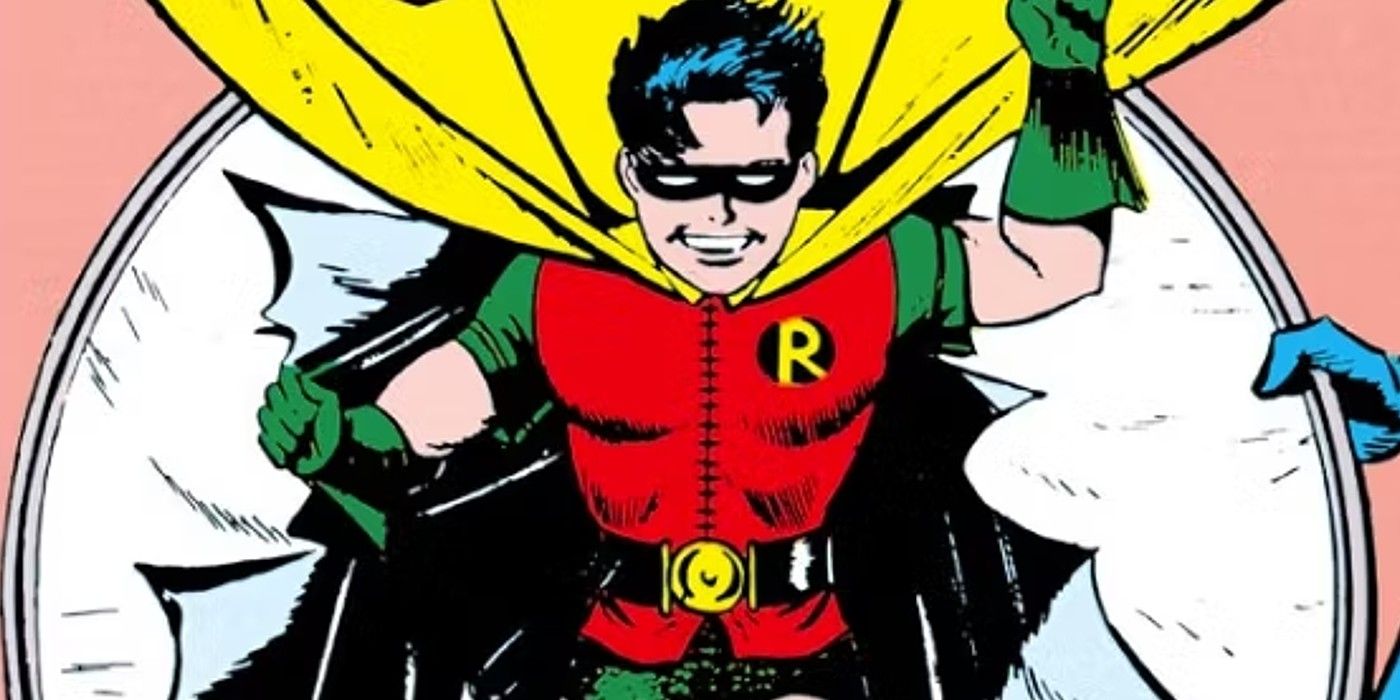[[{“value”:”
Robin did more for DC Comics than just become Batman’s sidekick. Whether in the form of Dick Grayson or Damian Wayne, Robin is considered by the masses to be an essential part of Batmanlore. Tim Drake said it best and most readers will agree: Batman needs a Robin.
The sentiment goes even further, historically, as there was a point in time when Batman wasn’t the only one who needed Robin: the comic book industry needed Robin. Historical accounts like Batman: The Complete History – The Life and Times of the Dark Knight by Les Daniels and Chip Kidd cite Robin as instrumental in the comic industry’s boost in sales during the Golden Age of comics.
The character also created tropes in comic book storytelling that are still prevalent today. A turning point for the comic book industry and its culture can be traced back to Robin, much of its modern success begins with the character’s conception.
First Appearance: “Batman and Robin the Boy Wonder” by Bill Finger, Bob Kane, Jerry Robinson, and Whitney Ellsworth in Detective Comics #38
As detailed in Batman: The Complete History, according to Jerry Robinson, “it was Bob [Kane’s] idea to give Batman a kid sidekick. He wanted someone the young readers could identify with more readily than this masked, mysterious figure.” As much as readers loved Batman at the time, he wasn’t exactly relatable on a surface-level. While there are qualities and characteristics, like his fears, that make Batman relatable, children found it hard to connect with a wealthy aristocrat who moonlights as a bat to cope with the death of his parents.
When all the popular superheroes were fully-grown adults, Robin gave kids a character they could identify with – and one they wanted to invest time in for that very reason.
While the comic-book medium attracts readers from all age demographics, kids have typically been the main target demographic for superhero comics in particular. At the dawn of the superhero age, publishers were in desperate need of more heroes who reflected their audience. When all the popular superheroes were fully-grown adults, Robin gave kids a character they could identify with – and one they wanted to invest time in for that very reason. If children were really to invest as readers, then those same kids could convince their parents to invest as well – monetarily speaking.
Robin Made a Major Impact on Comic Sales
Parents Felt Comfortable Buying Batman Comics for Their Kids
From the moment that Robin was introduced, sales for Detective Comics were boosted almost instantly. Specifically, as detailed in Batman: The Complete History, comic sales overall doubled moving forward. As a result, the previously solo hero Batman would not fight crime without a sidekick for the next thirty years. Even after Dick Grayson ascended to Nightwing, or Jason Todd died, or even when Tim Drake briefly tried to take on new identities as Red Robin and Drake, DC Comics always ensured that Batman had a Robin by his side.
Related
After 84 Years, I Finally Believe That Batman Was Right to Recruit a Kid as Robin (He Had No Choice)
While I absolutely love the Dynamic Duo of Batman and Robin, I’ve always rolled my eyes over the Dark Knight’s reasoning for allowing child soldiers.
DC Comics took note of the formula for Robin joining Batman and acted accordingly. Parents also took note of the new Dynamic Duo. Before Robin teamed with Batman, Batmanstories in Detective Comics were a little violent and dark for a parent’s liking. Robin’s introduction toned Batman’s appearances down to something more appropriate not only for kids, but for a child character to be involved in. The comics became more lighthearted, which put the parents who were buying these comics for their kids more at ease – enough to become regular customers for every issue. The comics needed Robin as much as Batman did.
It’s worth noting that Robin’s introduction came at a time when there was a boom in radio listeners and, as far as pop culture was concerned, that was the biggest demographic out there. As a result, readers were losing interest in reading. It wasn’t just Batman books that were in danger of going obsolete, but comic books as an entire pastime. Readers were tossing away their comics in favor of the new, hot thing – until Robin made his debut. It took time to find a formula that worked well enough to bring readers back to comic stands, but DC found it by way of the new Boy Wonder.
Why Did Kids Love the Original Version of Robin?
A Hero Who Looked Like Them
The addition of Robin dramatically changed Batmancomics forever. As co-creator Bill Finger explains in The Complete History, “Batman didn’t have anyone to talk to,” so now he had a companion to feed his thoughts to during investigations. The musings of Bruce Wayne that were saved for thought bubbles or narration could now be uttered out loud to his sidekick and, by proxy, to an audience wanting a more intimate connection with their heroes. In addition, the tone was changed with Robin joining the cast. Batman: The Complete History mentions:
With his bright red, yellow, and green costume, Robin altered the series visually, and his brighter personality also affected the mood of the comic … “The pulps were grim, lacking in humor,” Finger said, but the appearance changed that tone. “The puns were there; the dialogue easy, fluid, and flowing. It brightened up the strip and added characterization to the main figure of Batman.”
Batman’s comics became colorful in every sense of the word as a direct result of Robin essentially launching the Bat-Family. The stories were suddenly allowed to not maintain such a starkly serious tone for their entirety. Even costume-wise, Batman’s costumes gained a tinge of blue coloring, and he was allowed to crack a smile. That tone remains prevalent today, as even the darkest Batman stories have a small ounce of whimsy and character to break the tension. Both Batman and Robin crack jokes now, and that’s all thanks to the original Robin.
The current iteration of Robin – Damian Wayne – is currently co-starring with his father, Bruce Wayne, in Batman and Robin, available now in single issues and collected editions from DC Comics.
These qualities proved more appealing to the parents who were buying their kids comics, but more than anything, they became more appealing to the kids themselves. Robin gave Batman’s key demographic – children – a hero who looked like them. Audiences want to see themselves reflected in their protagonists. Like any paying customer or reader, a kid wants to envision themselves in an adventure or imagine they’re capable of pulling off the feats that Robin regularly achieves. That’s enough to make casual readers into devoted followers of any comic.
Robin Forever Reshaped the Superhero Genre in Comic Books
Suddenly, Everyone Had a Sidekick
Robin’s debut didn’t just change comic-book audiences, but also the creative choices within the comic industry. Other publishers started to see Robin’s success for Batman and tried to duplicate it for themselves – with varying results. As said, child audiences struggled to connect with their adult protagonists, so protagonists started getting their own child sidekicks. Suddenly, within the next couple of years, Captain America worked with Bucky Barnes, Green Arrow adventured with Speedy, and the original Captain Marvel flew around with Mary Marvel. The list of young sidekicks introduced in that timeframe grew exponentially.
Truth be told, after Robin’s debut, the idea of the sidekick in general became widespread and appealing. In a similar timeframe, the original Green Lantern met Doiby Dickles, Hawkman found Hawkgirl, and Superman eventually discovered Supergirl. Young or not,superhero sidekicks have become a trope, and it’s all because of Robin’s success within the comic book industry. The introduction of Robin not only changed Batman for the better, but he changed the comic book industry in ways that remain relevant to current stories and characters.
Detective Comics #38 is available now from DC Comics.
Source: Batman: The Complete History – The Life and Times of The Dark Knight
“}]] Here’s how Robin changed comics. Read More

